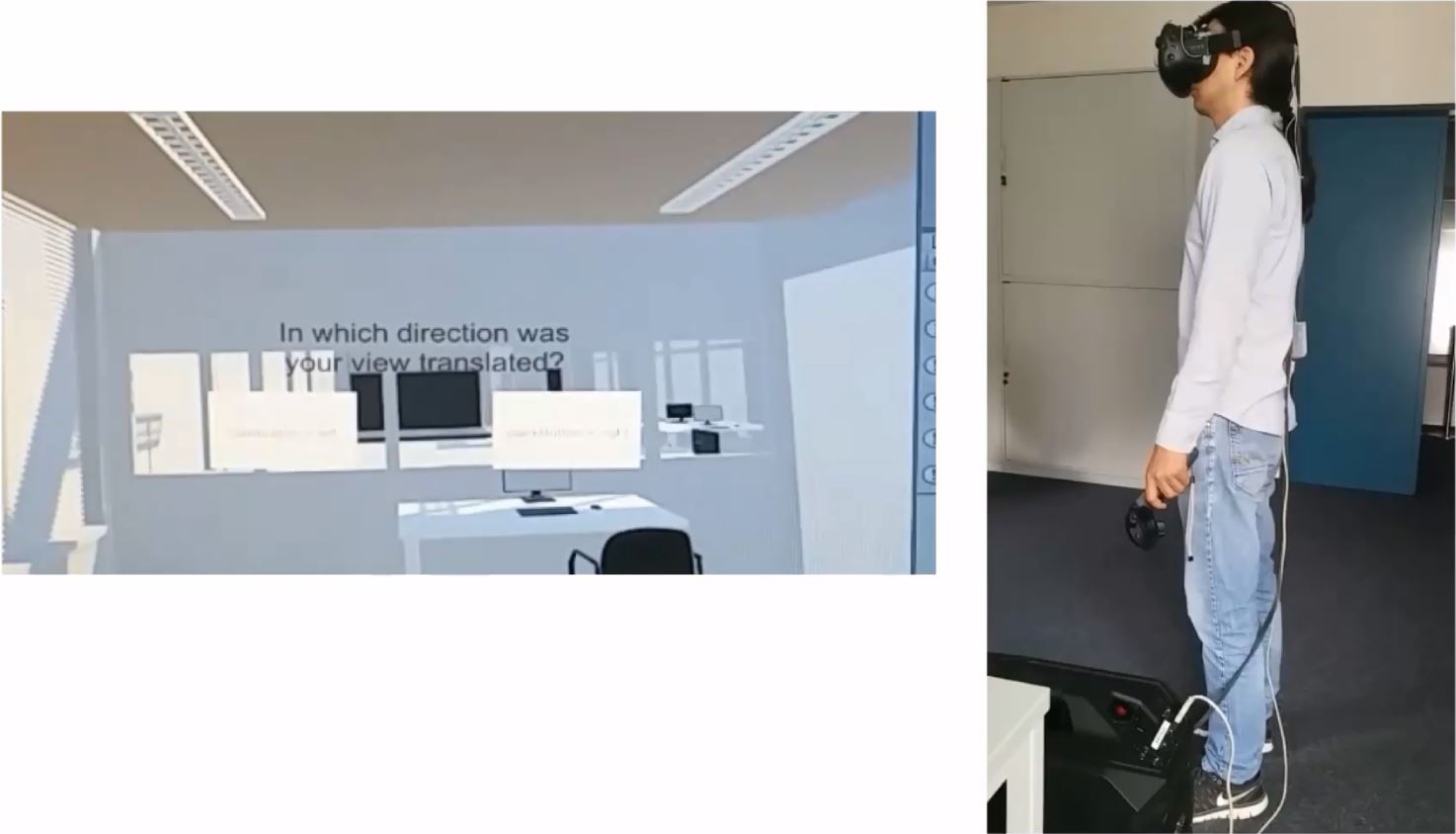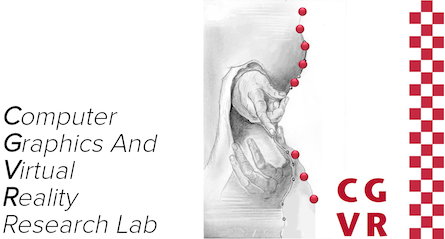Redirected Walking in Virtual Reality during eye blinking

The main goal of this study was to find out whether users are able to notice Redirected Walking manipulations in Virtual Reality (VR) by changing their position in VR when these manipulations occur during eye blinking.
Description
This bachelor's thesis aimed to explore a Redirected Walking technique which helps to achieve more immersion in Virtual Reality (VR) by creating the illusion of free movement by using features of the human visual perception. This technique is based on manipulations, such as rotation and translation of virtual objects or of the users point of view. The main goal was to ascertain if users are able to notice manipulations by changing their position when these manipulations occur during eye blinking. In particular, at the time when a person blinks, the position of his/her point of view in virtual space changes. The additional aim of this work was to design a system that would allow RW during eye blinking using an HMD and to build an eye blink detection device prototype.

This experiment uses an HTC Vive Head Mounted Display (HMD), Unity3D Game Engine and a self-made eye blink sensor. The blink sensor is based on an Arduino Uno microcontroller, a LED and a photo sensor. The experiment was implemented in Unity3D, and participants were standing in a virtual environment that replicated the real room. During the experiment, participants were wearing an HTC Vive HMD and had a wireless StreamVR controller in their hands to choose the answers in VR. The main manipulations during the experiment were rotation and translation along 3 axes and by 7 values.
Results
The results showed that rotations in the negative direction, in particular around the Y-axis, were perceived correctly up to 86-97%, by the Z-axis up to 80-90%, and by the X-axis up to 78-82%. Translations were also perceived correctly, but users tended to choose the positive direction when they were translated along the Z-axis.

In addition, participants were evaluated by the Kennedy SSQ to check for physical side effects, and these effects increased after the experiment. The results of this experiment demonstrate that Redirected Walking in Virtual Reality during eye blinking is possible, but there are some additional factors which need to be considered:
Files
Full version of the bachelor's thesis
Here is a video from user study:
Collaborations
This work was performed in collaboration with hci.informatik.uni-hamburg.de.
License
This original work is copyright by University of Bremen.
Any software of this work is covered by the European Union Public Licence v1.2.
To view a copy of this license, visit
eur-lex.europa.eu.
The Thesis provided above (as PDF file) is licensed under Attribution-NonCommercial-NoDerivatives 4.0 International.
Any other assets (3D models, movies, documents, etc.) are covered by the
Creative Commons Attribution-NonCommercial-ShareAlike 4.0 International License.
To view a copy of this license, visit
creativecommons.org.
If you use any of the assets or software to produce a publication,
then you must give credit and put a reference in your publication.
If you would like to use our software in proprietary software,
you can obtain an exception from the above license (aka. dual licensing).
Please contact zach at cs.uni-bremen dot de.

